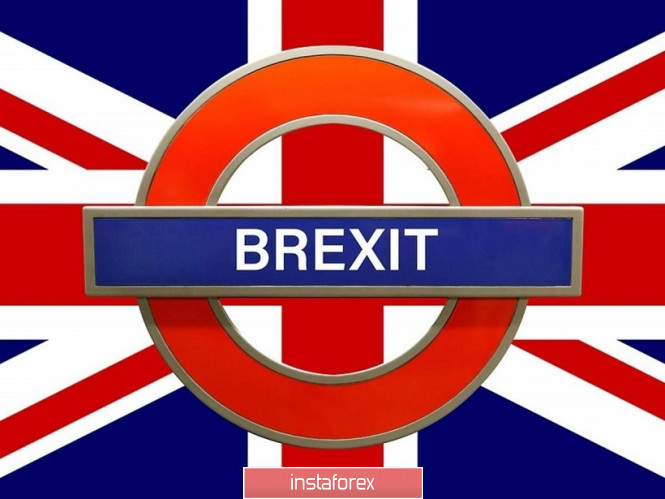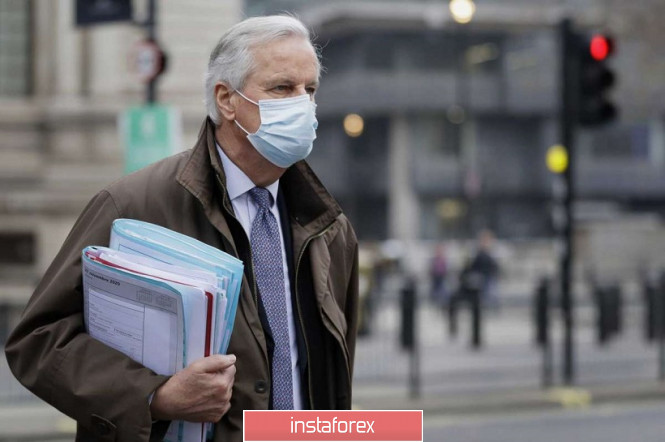The Pound-Dollar pair collapsed by more than 150 points today, despite the general weakening of the Dollar. If in the morning, the Pound tested weekly highs at the level of 1.3440, then at the height of the American session, the bears were already at the level of 1.3280. Such price turns are due to Brexit, which again became a headache for traders. The contradictory news flow does not allow investors to determine the price movement vector even within the day, not to mention the broader time periods. The closer the deadline is, the more sharply the Pound reacts to all sorts of information about the prospects of a trade deal. At the same time, the news flow is so mixed that the pair easily flies within the almost 200-point range.

The fact is that the most top speakers, as a rule, go to extremes: some of them say that everything is lost and the deal will not be concluded, while others are sure that the agreement is about to be signed. In such conditions, it is difficult for GBP/USD pair traders to find a foothold. This problem is relevant for both bears and bulls of the pair. For example, at the end of today, sellers were unable to develop the downward momentum-- the pair moved away from the daily lows while buyers lost about a hundred points relative to the intraday high. Most importantly, no one can say exactly which way the pendulum will swing. Short-term trading can be compared to a lottery where the only ally of the trader is the luck factor.
If we consider the medium-term and especially the long-term perspective, then the fundamental alignment is somewhat different. The fact is that the parties are gradually approaching the final point of the negotiation process. We are not talking about declarative deadlines that have been surpassed more than once. We are talking about a specific date: December 31, 2020. You will not be able to bypass this date. In any case, you will need to make one of three decisions: either conclude a trade deal, or announce the implementation of a difficult option without an agreement, or extend the transition period. These are the only options. Even if we assume that the parties will break all contact before the New year, from January 1, Britain and the European Union will automatically switch to WTO rules with all the consequences that follow. This was spelled out in the main Brexit agreement which was concluded earlier this year.
In other words, within the next two-- maximum of three-- weeks, the parties must decide on one of the three options listed above. The closer the final hour is, the higher the stakes. There is a game of nerves like last year, when the final agreement on Brexit was agreed almost at the last moment before the deadline.
In fact, for this reason, the Pound is on the defensive, despite the pessimistic statements of the negotiators from both London and Brussels. In particular, Michel Barnier was skeptical today about the likelihood of reaching a compromise. According to him, it will be clear by the end of the week whether the parties will be able to find a common denominator or not. In turn, the representative of the British Prime Minister said that London is not going to retreat from the voiced positions. At the same time, he added that the negotiating teams "will work intensively on a trade deal until it is concluded, or it becomes finally clear that it will not be,"
As in the past year, the parties do not tire of repeating that they are ready to implement the difficult option. Within two days, this was stated in one form or another by Prime Minister Boris Johnson, British Finance Minister Rishi Sunak, and the head of the British negotiating group David frost. The Europeans take a slightly different position because London needs the deal more than Brussels.
In other words, the parties repeat last year's phrases almost verbatim while performing political maneuvers that are already familiar to traders. Therefore, there is a general confidence in the market that eventually the negotiating groups will either reach a compromise or extend the transition period for several months. We must not forget about the Coronavirus factor, which complicates the implementation of the difficult option.

Another thing is that despite the demonstrative principles, Britain still softens its position on many issues. An example of this is the issue on fishing. At the beginning of the year, the British did not even want to discuss any options of letting European fishing vessels in their waters. London then agreed to consider possible compromises. Now Britain is de facto ready to make concessions but only under certain conditions. In other words, it remains for the parties to make the final push that will open the way to a trade deal. Judging by the stress resistance of the Pound, the market is almost sure that this step will be made or the negotiators will take an extra minute.
All this suggests that in the medium and long term, long positions are in priority for the GBP/USD pair with the first target at 1.3450 (the upper line of the Bollinger Bands on the weekly chart). At the same time, you need to be prepared for a deep corrective pullback since the market reacts quite sharply to the current news background, which is situationally contradictory.
The material has been provided by InstaForex Company - www.instaforex.com